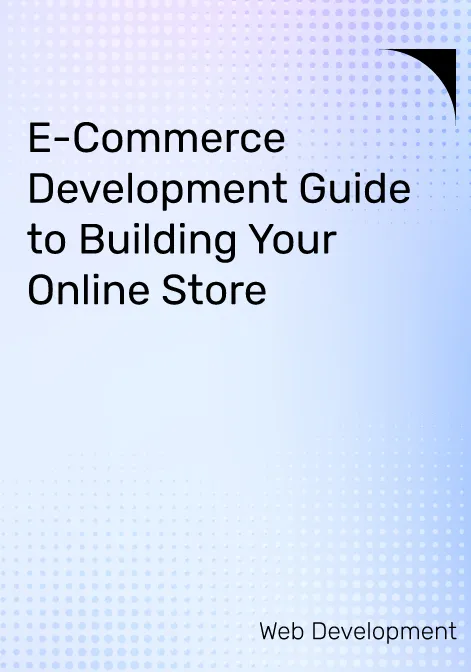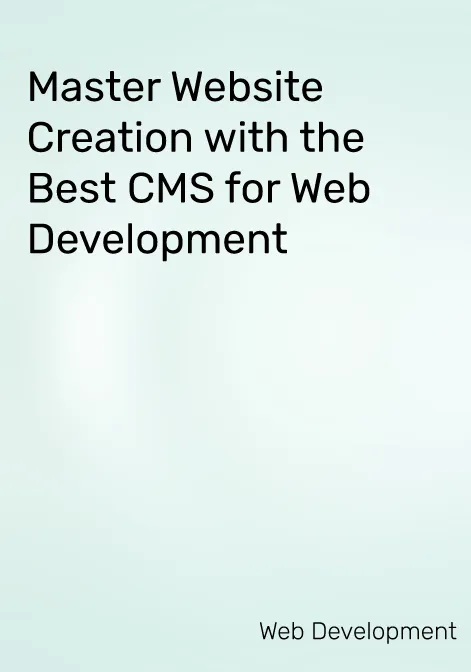The internet has changed how we shop, and e-commerce is at the heart of this transformation. Whether you’re a small business owner, an aspiring entrepreneur, or a digital marketer, having an online store can significantly boost your sales and brand presence. This guide will walk you through the essential steps of e-commerce development to create a successful online store.
Planning Your E-Commerce Store
Defining Your Business Goals and Target Audience
Before you start building your online store, it’s crucial to define your business goals and identify your target audience. Ask yourself the following questions:
- What niche market will you serve?
- Who are your target customers?
- What are your sales targets and brand awareness goals?
Understanding your audience’s needs and setting clear business goals will help you make informed decisions throughout the development process.
Choosing the Right E-Commerce Platform
Selecting the right e-commerce platform is a critical step in your online store’s success. Popular platforms like Shopify, WooCommerce, and BigCommerce offer various features, pricing plans, and ease of use. When choosing a platform, consider factors such as scalability, security, and available integrations. Here’s a quick comparison:
- Shopify: User-friendly, offers various themes, and excellent customer support.
- WooCommerce: Highly customizable, suitable for WordPress users, and affordable.
- BigCommerce: Robust features, excellent SEO capabilities, and scalable.
Evaluate the features and pricing of each platform to determine the best fit for your business.
Product Selection and Sourcing
Choosing the right products to sell is essential for your online store’s success. Ensure your product range aligns with your target audience’s preferences and needs. Consider the following strategies for sourcing products:
- Manufacturers: Directly source products from manufacturers to cut costs.
- Wholesalers: Purchase products in bulk from wholesalers for resale.
- Dropshipping: Partner with dropshipping suppliers to sell products without holding inventory.
Additionally, plan for inventory management to ensure a smooth operation and avoid stockouts.
Additional Reads: Website Development Guide
Building Your E-Commerce Platform
User Interface (UI) and User Experience (UX) Design
Creating a user-friendly and visually appealing online store is crucial for attracting and retaining customers. Focus on the following best practices for UI and UX design:
- Website Navigation: Ensure easy navigation with clear menus and search functionality.
- Product Pages: Use high-quality images, detailed descriptions, and customer reviews.
- Checkout Process: Simplify the checkout process to reduce cart abandonment rates.
A well-designed online store will enhance the shopping experience and encourage repeat purchases.
Essential Features for Your E-Commerce Store
To provide a seamless shopping experience, your e-commerce store should include the following essential features:
- Shopping Cart Functionality: Allow customers to add, view, and edit their cart items.
- Secure Payment Gateways: Offer various payment options and ensure secure transactions.
- Customer Account Management: Enable customers to create accounts, track orders, and manage wishlists.
- Content Management System (CMS): Create and manage product descriptions, blog posts, and other content.
- Mobile Responsiveness: Ensure your store is optimized for browsing on all devices.
Incorporating these features will help you build a robust and user-friendly online store.
E-Commerce SEO and Marketing
Optimizing Your Store for Search Engines (SEO)
Effective SEO is essential for driving organic traffic to your online store. Implement the following on-page SEO best practices:
- Keyword Research: Identify relevant keywords like e-commerce development and digital marketing strategies.
- Product Titles and Descriptions: Use targeted keywords in product titles and descriptions.
- Meta Tags: Optimize meta titles and descriptions with relevant keywords.
Additionally, high-quality product images and engaging content will improve your store’s visibility and attract potential customers.
E-Commerce Marketing Strategies
To reach your target audience and drive sales, implement the following e-commerce marketing strategies:
- Social Media Marketing: Utilize platforms like Facebook, Instagram, and Twitter to promote your products and engage with customers.
- Email Marketing: Build an email list and send personalized campaigns for customer engagement and promotions.
- Pay-Per-Click (PPC) Advertising: Run targeted ads on search engines and social media to drive traffic to your store.
These strategies will help you connect with your audience and boost your online store’s visibility.
E-Commerce Operations and Security
Payment Processing and Security Measures
Ensuring secure payment processing is vital for building trust with your customers. Implement the following measures:
- Secure Payment Gateways: Choose reliable payment gateways like PayPal, Stripe, and Square.
- Data Security: Use SSL certificates and ensure PCI compliance to protect customer data.
- Fraud Prevention: Implement strategies to detect and prevent fraudulent transactions.
By prioritizing security, you can protect your customers’ information and build a trustworthy brand.
Order Fulfillment and Shipping
Efficient order fulfillment and shipping are crucial for customer satisfaction. Establish the following processes:
- Order Fulfillment: Streamline picking, packing, and shipping processes.
- Shipping Carriers: Choose reliable carriers and offer flexible shipping options.
- Shipping Software: Integrate with shipping software for streamlined management.
Providing timely and reliable shipping will enhance the customer experience and encourage repeat business.
Customer Service and Support
Excellent customer service is key to building trust and loyalty. Implement the following practices:
- Multiple Support Channels: Offer support via email, phone, and live chat.
- Clear Return and Refund Policy: Provide a straightforward policy to handle returns and refunds.
- Personalized Support: Address customer queries promptly and provide personalized assistance.
Prioritizing customer service will help you build a loyal customer base and positive brand reputation.
E-Commerce Analytics and Optimization
Tracking Website Traffic and Customer Behavior
- Website Traffic Sources: Identify where your traffic is coming from (e.g., search engines, social media).
- User Behavior Patterns: Analyze how visitors interact with your site.
- Conversion Rates: Measure the percentage of visitors who make a purchase.
Understanding these metrics will help you make data-driven decisions to improve your store’s performance.
Optimizing Your Store Based on Data
Continuous optimization is essential for maintaining a successful online store. Implement the following practices:
- A/B Testing: Test different elements of your store (e.g., product pages, checkout process) to identify what works best.
- Data-Driven Decisions: Use analytics data to make informed decisions for optimization.
- Stay Updated: Keep up with e-commerce trends and best practices to stay competitive.
By regularly optimizing your store, you can enhance the shopping experience and drive more sales.
Additional Reads: Custom Website Development
Why Choose Matic Solutions for E-Commerce Development?
Matic Solutions stands out as a premier provider of e-commerce development services. With a team of seasoned professionals, we craft tailor-made e-commerce platforms that are both robust and user-friendly.
Our expertise spans across various industries, ensuring that each online store we develop is catered to specific business needs and customer preferences.
By integrating the latest technologies and following best practices in SEO, security, and user experience design, we help businesses achieve their online goals efficiently and effectively.
Trust Matic Solutions to elevate your e-commerce presence and drive success in the digital marketplace.




